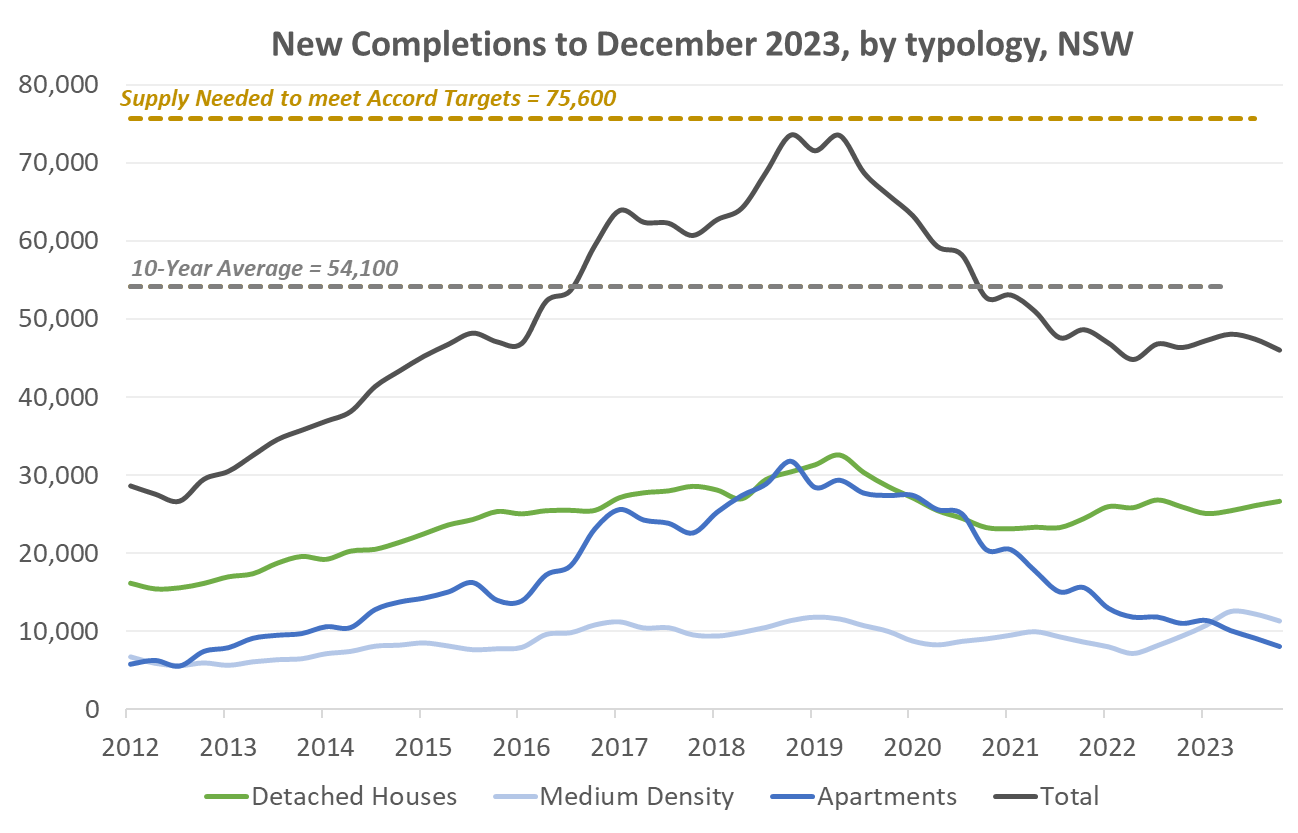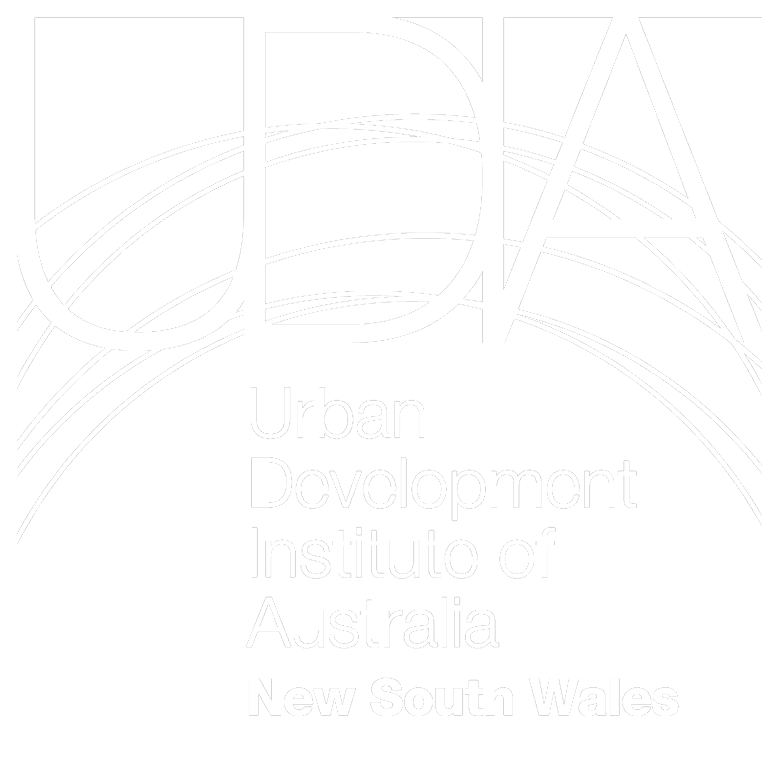Today’s release from ABS on new commencements and completions puts a spotlight on the ongoing housing crisis and its impact on NSW’s capacity to deliver much needed housing and meet our obligations under the National Housing Accord.
“Unfortunately, the data reaffirms the depths of the crisis. We need to be hitting record numbers, close to that of 2018, in the apartment market, if we are to meet the 377,000 homes committed to under the National Housing Accord. Yet we have never been further from that target in the last 11 years,” said Gavin Melvin, Acting CEO, UDIA NSW.
For the 12 months to December 2023, NSW recorded just over 46,000 newly completed residential dwellings. This is the lowest number of completions in a 12-month period since March 2015, and sits 37% below the state’s peak performance in December 2018.
The defining factor between 2018’s peak performance and current delivery, is the continued drop in completed apartments, which is defined by ABS as any apartment block containing four or more storeys..
Apartment completions are at an 11 year low of 8,000 and sit at a shocking 75% below their 2018 peak.

Source ABS: UDIA NSW
With escalating construction costs and high interest rates, it’s arguably never been harder to bring apartments to the market at a price purchasers can actually afford. The Government needs to be looking at all possible levers to support industry and underpin feasibility. This must include pausing taxes, levies and charges, including developer contributions and doing everything possible to reduce the amount of time taken to approve and construct new apartments.
Issues in the detached housing market are still prevalent, with today’s data revealing that completions remain 18% below their peak. While there are early signs of improvement and a slow return to the peak of 2019, recent approvals data shows that housing approvals are also slumping considerably, spelling an unfavourable forward pipeline.
UDIA is pleased to see reforms like the Transit Oriented Development (TOD) Program are looking to address this by expediting pathways in accessible locations for more high-density developments. However, these reforms are being met with their own host of challenges including local opposition and challenging economic conditions, which are not ameliorated sufficiently by the proposed provisions.
“With conditions expecting to get worse before they get better, releases like today’s data highlight the deteriorating state of the housing market and stress the urgency with which Government must engage with industry to find solutions that create a seismic turn around in approvals and commencements,” said Mr Melvin.
Media Enquiries: Director, Media & Communications UDIA NSW and National:
Deanna Lane 0416 295 898 or dlane@udiansw.com.au

